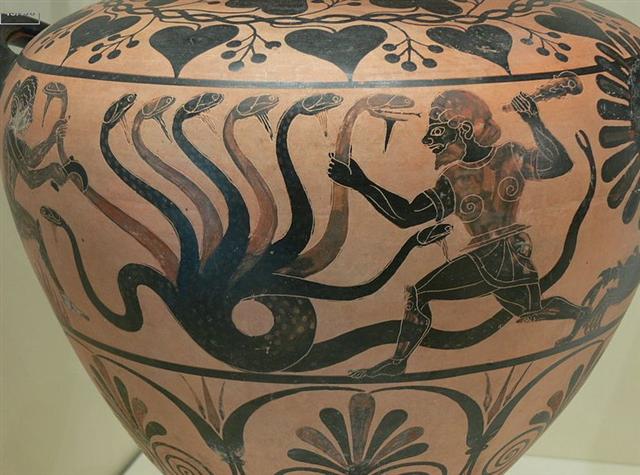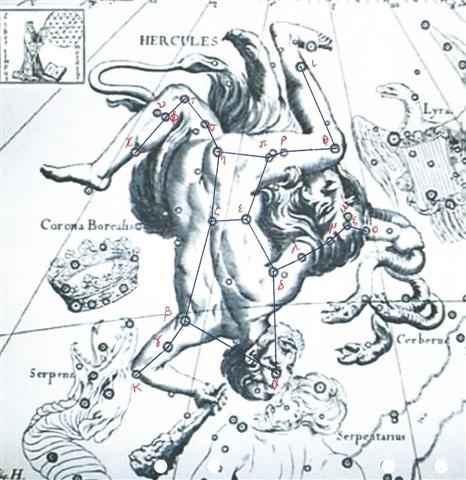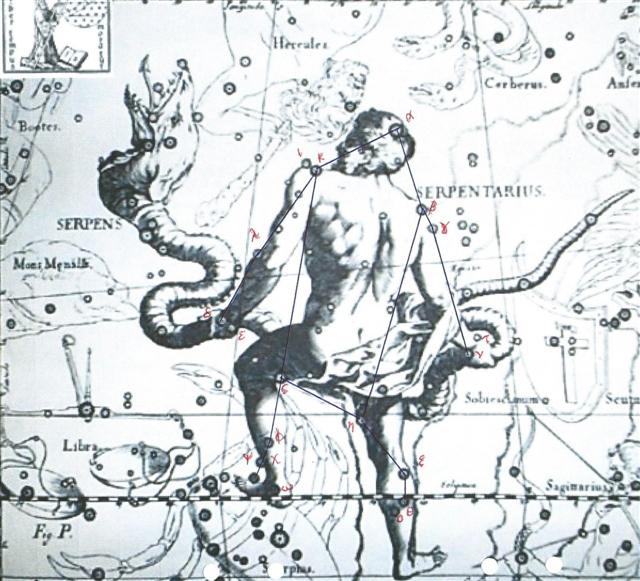The Necks of the Serpents (Unuk Elhaia, λ Serpentis) is not a star in Hercules.
Instead Hevelius had a new constellation Cerberus at this place, whereas the head of the great single Serpent was at the back side of the upside down Hercules:
Allen: "The royal poet James I designated the infernal Cerberus as 'the thrie headed porter of hell', and the heavenly one has been so figured, although with serpents' darting tongues; but the abode and task of the creature would seem to render very inappropriate his transfer to the sky, so that it probably was only made for the purpose of mythological completeness, as the death of this watch-dog of Hades fitly rounded out the circle of Heracles' twelve labors." And Unuk Elhaia (λ, plural) is neither at the right elbow of Hercules nor at the left elbow of Ophiuchus:
The Necks of the Serpents is a single star close to Cor Serpentis (α) - the Heart of the Serpent - and both stars are at the neck of the creature:
This place seems to be a mirror (complementary) image of the Pleiades, where Tau-ono (plural) was followed by the Foundation Stone Temennu = Alcyone (singular).
The singular form should represent the broad daylight when the Sun (a great single star) was ruling, whereas at nighttime there were multiple stars. ... Unuk al Hay, - or Unukalhai, - is from 'Unk al Hayyah, the Neck of the Snake, the later Arabic name for this star; the Uunk al Hay of the Standard Dictionary is erroneous, - a type error perhaps for Unuk. Although errors in the adoption of Arabic star-names into our popular lists are common, indeed almost universal, this Unuk is peculiarly wrong, for 'Unūk is the plural of 'Unķ ... |
||||||||||||||||||||||||||||||||||||||||||||||




